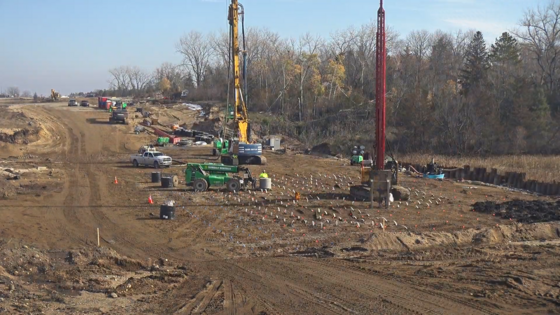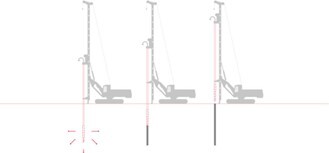MnDOT Innovation Focus
 Yes, you can innovate, on purpose, and with impact.
By Katie Walker, MnDOT’s Director of Research & Innovation
|
MnDOT innovators, in this issue I’d like to share this conversation between Natalie Turner, Inventor of the Six ‘I’s, and Simon Allison, Sustainability and Innovation Manager of Perfectly Fresh, a vertical farming company. Turner and Allison explore how sustainability can be a driver of innovation. Learn what sustainability means to MnDOT.
Here are the key takeaways:
|
|
 |
-
Purpose is essential: Having a clear purpose or why behind your innovation efforts is crucial. It serves as a guiding light, aligns teams, and motivates stakeholders. PURPOSE helps ensure that innovation efforts are focused on addressing critical needs and challenges.
-
Integration of the Six ‘I’s: The Six ‘I’s bring in the essential elements of identifying opportunities, igniting creativity, investigating and testing ideas, investing resources, implementing solutions, and continuously improving. Integrating the two models allows for a more holistic and iterative approach to innovation.
-
People are crucial to successful innovation outcomes: Innovation is ultimately driven by people. Recognizing and leveraging the strengths and mindsets of team members is critical. Additionally, influencing skills are essential for successful innovation, as teams need to influence decision-makers and stakeholders throughout the whole process.
Register and listen to the full conversation.
Innovation Hour: Experimentation

MnDOT’s Office of Research & Innovation hosted “Innovation Hour” on January 22, 2024, which explored experimentation, one part of the E3 mindset, a core part of MnDOT's Innovation Strategy. A panel of MnDOT staff shared how they are experimenting and innovating in the areas of people, processes, and products.
A big thank you to our presenters – TJ Melcher, Mai Xiong, Robin Rust and Kohl Skalin – who shared their experiences, and the different ways experimentation happens across MnDOT in connection to people, processes, and products. Whether innovation is deliberate or something one jumps right into, experimenting is the step in the innovation process that often leads to answers and improvements that benefit our internal agency work and life in the communities MnDOT serves.
A recording of the event is now available on MnDOT’s Research & Innovation YouTube channel.
|
Automated Roadway Support Method Delivers Construction Savings
 Stabilization is an important part of roadway construction projects, to ensure roadways can support pavement loads and minimize disruptions to the surrounding environment. Reinforcement is often needed when there are peaty or mucky soils, or the roadway is located near a waterbody. Traditionally, timber and concrete piles have been used to reinforce the foundation. In MnDOT’s Hwy 23 South Gap project, MnDOT is utilizing a new, innovative solution called Controlled Modulus Columns (CMC).

Developed in the 1990s, CMC, also called rigid inclusions, are a ground improvement technique executed through a simple procedure that involves injecting grout or concrete through the hollow core of the drilling tool. The CMC machines can place up to 11 concrete shafts per hour and are much quieter than a pile driving rig, reducing the impact to nearby communities. 430 columns were used in the Hwy 23 South Gap project; a time lapse video shows the installation process.
“This innovative technique resulted in major time and cost savings—it took 2.5 weeks to drill the CMC columns, compared to 2.5 months for the original timber design plan. The CMC design saved the project $1.4 million,” said Alan Setrum, Hwy 23 South Gap project engineer.
While CMCs are commonly used in construction projects, creating foundations for buildings and agricultures, they are still new to the transportation sector. MnDOT has utilized CMCs on two other projects, Hwy 169 at Nine Mile Creek and the Twin Ports Interchange, and is exploring expanded use in the future.
“This method stabilized the ground, providing the strength needed to carry the roadway far into the future, without adverse effects to our surrounding environment,” said Adam Ahrndt, District 8 resident engineer.
|
Celebrating Excellence: Josie Birch, MNIT's Rising Star
J-Turn Program Recognized with 2023 National Roadway Safety Award
By J.P. Gillach, Reprinted from the December 13, 2023 issue of Newsline.

MnDOT was honored with the 2023 National Roadway Safety Award Program Planning, Development and Evaluation, for the agency’s innovative work and success of its J-turns program. The award was presented Nov. 29 at a ceremony in Washington, D.C. and is sponsored by the Federal Highway Administration and the nonprofit Roadway Safety Foundation.
MnDOT has built nearly 100 J-turn intersections at high-speed four-lane divided highways since 2010. A 2021 evaluation found J-turns reduced fatal and serious injury crashes by 69 percent.
“We had a very competitive applicant pool this year, and our blue-ribbon panel of judges determined that this project was among the strongest for safety effectiveness, innovation/transformation, and cost-effectiveness/economic strength,” the Roadway Safety Foundation stated in its award letter.
“The problem-solving creativity and dedication shown by the Minnesota Department of Transportation will save countless lives – using a data driven approach and practices that are proven to reduce crashes,” said FHWA Administrator Shailen Bhatt. “It demonstrates a strong commitment to moving Minnesota toward zero deaths and serious injuries on the state’s roadways, and we are proud to applaud their efforts.”
Learn more about J-turns, why they work and how to navigate them.
|
The Science of Failing Well

MnDOT’s Equity and Diversity newsletter shared a reading recommendation last month, “Right Kind of Wrong: The Science of Failing Well,” by Amy C. Edmondson, award-winning researcher and Novartis Professor of Leadership and Management at the Harvard Business School. Innovation is all about pursuing smart risks, so we’ve decided to share the title here as well.
In this new book, Edmondson encourages us to rethink our understanding of failure and teaches us how to use the lessons learned in ways that are productive and effective.
|
As you read or listen, consider the following questions:
- Edmondson identifies three archetypes of failure: basic, complex, and intelligent. Can you think of times when you experienced any of these archetypes? What did you learn?
- The book encourages organizations to “embrace human fallibility.” What would that look like at MnDOT?
- How do you define failure? Is it the opposite of success? Is it to be avoided at all cost? Do you ascribe to the notion of failing fast and failing often, or do you think there should be a more nuanced approach?
Right Kind of Wrong: The Science of Failing Well is available at the MnDOT Library.
Mobility, Access, and Transportation Insecurity Program Request for Proposals
The Mobility, Access, and Transportation Insecurity (MATI) program has released its Request for Proposals (RFP). Submissions are due April 30, 2024.
Funded by the Federal Transit Administration and managed by the University of Minnesota, MATI seeks to support the planning and development of community-shaped, innovative demonstration projects that can help address issues of transportation insecurity.
This RFP will lead to the selection of applicants that will participate in the program during a Phase 1 planning grant. A second competitive process will identify a subgroup of Phase 1 participants who will proceed to Phase 2 and receive additional funding to deploy a proposed demonstration. Visit the MATI website for complete RFP information and submission instructions.
Biden-Harris Administration Announces $34 Million in Grants to 10 States for Advanced Digital Construction Technologies That Save Time and Money
The U.S. Department of Transportation’s Federal Highway Administration (FHWA) announced the award of $34 million in grants to 10 projects in 10 states under the Advanced Digital Construction Management Systems (ADCMS) grant program. The grants will help promote digital construction, such as computer modeling and 3D design, and state-of-the-art practices to accelerate project delivery, and reduce project delays and cost overruns. The new program under the Bipartisan Infrastructure Law provides a total of $85 million over five years.
“The ten projects selected for funding will help advance digital construction nationwide because they will serve as models for other state and local transportation agencies to adopt these best practices,” said Federal Highway Administrator Shailen Bhatt. “With funding from President Biden’s Bipartisan Infrastructure Law, these technologies will help us more quickly deliver the transportation system of the 21st century.”
Minnesota transportation officials will use the funds to update asset and digital data management systems across the state’s construction cycle with the goal of improving decision-making, managing risks and employing mitigation strategies. Project funds will fill critical needs for hardware, software and workforce training, allowing easier access to information about preliminary designs and construction plans, more safeguards and quality assurance.
Innovation Reading
Looking to get assistance with or share an innovation?

|